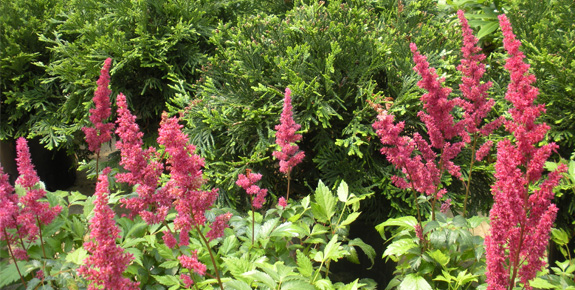Thoughts

Summer’s Heat
Summer’s heat can stress newly installed plants that have not had time to establish. A watering schedule is a must to ensure plants develop a strong root system that will keep them coming back for many future years.
Recognize the plant hierarchy that is present in your planting beds. Trees have the largest root systems of any plants and are first to claim water and nutrients present in the soil. Shrubs are next to suck up available water. Perennials and annuals must compete with the roots of trees and shrubs. Avoid fertilizers high in nitrogen, which cause plants to push out new leaves that quickly burn in the sun.
The best time to water planting beds is early in the morning before sun touches the plants. This will allow plants to absorb water before the day gets hot and allows wet leaves to dry quickly. Leaves that remain moist for a long time, which happens during a late evening watering, can increase the risk of fungal diseases.
A drip irrigation system is highly recommended for planting beds that have been newly installed or have a tendency to dry out quickly. These systems can be manual or fully automated. Drip irrigation systems conserve water usage by slowly delivering water to plant roots. Drip irrigation reduces water runoff and avoids wetting plant leaves.
Remember, too much of something good can become bad. Check the soil around plants before you water to ensure that plants are not overwatered. Water plants well every few days rather than lightly every day in order to promote deep rooted plants. Generally, newly installed plants require water 3-4 times a week during hot, dry weather. Mature plantings that have been installed at least a year may only need to be watered once or twice a week.
With the correct watering schedule your landscape will thrive and bloom throughout the hot summer days.
